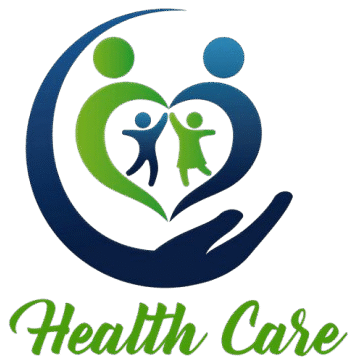Why Preventive Care Matters
Preventive care focuses on maintaining health and detecting issues before they become serious. By catching conditions like cancer, diabetes, or heart disease early, you can often treat them more effectively, saving time, money, and stress. The Centers for Disease Control and Prevention (CDC) estimates that 60% of adults have at least one chronic disease, and preventive care can reduce the incidence and severity of these conditions.
Key Benefits of Preventive Care:
- Early Detection: Screenings like mammograms or blood pressure checks identify issues before symptoms appear.
- Cost Savings: Free preventive services eliminate out-of-pocket costs, and early intervention prevents expensive treatments.
- Improved Quality of Life: Vaccinations, counseling, and wellness visits promote long-term health and vitality.
- Public Health Impact: Widespread use of preventive care reduces disease spread (e.g., flu shots) and health care system strain.
In 2025, with expanded ACA subsidies and broader Medicaid coverage, more Americans than ever have access to these no-cost services. Yet, many don’t take full advantage due to lack of awareness or busy schedules. Let’s explore what’s covered and how to use these benefits effectively.
What Are Free Preventive Benefits?
Under the ACA, most health insurance plans must cover a defined list of preventive services without charging you a copay or deductible, as long as you use an in-network provider. These services fall into three main categories: adults, women (including pregnant women), and children. Medicare and Medicaid also cover many of these services, with slight variations based on program rules.
Covered Preventive Services for Adults
The ACA mandates coverage for a wide range of screenings, vaccinations, and counseling for adults, tailored to age, sex, and risk factors. Key services in 2025 include:
- Screenings:
- Blood pressure checks (recommended annually for adults 18+).
- Cholesterol screening (for adults 40-75 or at risk).
- Type 2 diabetes screening (for adults 35-70 who are overweight or obese).
- Colorectal cancer screening (for adults 45-75, e.g., colonoscopy or stool tests).
- Lung cancer screening (annual low-dose CT scan for ages 50-80 with a smoking history).
- Depression screening (for all adults during primary care visits).
- HIV and hepatitis C screenings (for at-risk adults or one-time for ages 15-65).
- Vaccinations:
- Annual flu shot.
- COVID-19 vaccines and boosters.
- Tetanus, diphtheria, pertussis (Tdap) booster every 10 years.
- Shingles vaccine (for adults 50+).
- Pneumococcal vaccine (for adults 65+ or at risk).
- Counseling and Interventions:
- Tobacco cessation counseling and medications.
- Alcohol misuse screening and counseling.
- Obesity screening and counseling (for adults with a BMI of 30 or higher).
- Healthy diet and physical activity counseling (for those with cardiovascular risk factors).
- Sexually transmitted infection (STI) prevention counseling.
Covered Preventive Services for Women
Women have additional preventive benefits, including those related to reproductive health and pregnancy:
- Screenings:
- Breast cancer screening (mammograms every 1-2 years for women 40-74).
- Cervical cancer screening (Pap smear every 3 years for women 21-65, or HPV testing every 5 years for 30-65).
- Osteoporosis screening (for women 65+ or younger with risk factors).
- Domestic violence screening and counseling (for all women).
- Reproductive Health:
- Contraception (FDA-approved methods, including pills, IUDs, and sterilization, for women of reproductive age).
- Breastfeeding support, supplies (e.g., breast pumps), and counseling.
- Gestational diabetes screening (for pregnant women at 24-28 weeks).
- Folic acid supplements (for women planning or capable of pregnancy).
- Counseling:
- Well-woman visits (annual checkups to discuss preventive care).
- BRCA genetic counseling and testing (for women with a family history of breast/ovarian cancer).
Covered Preventive Services for Children
Children benefit from a robust set of preventive services to ensure healthy development:
- Screenings:
- Newborn screenings (e.g., hearing, metabolic disorders).
- Developmental and behavioral screenings (at well-child visits).
- Vision and hearing screenings (at recommended ages).
- Autism screening (at 18 and 24 months).
- Lead screening (for at-risk children under 6).
- Obesity screening and counseling (for children 6+).
- Vaccinations:
- Childhood immunization schedule (e.g., MMR, polio, HPV, meningococcal vaccines).
- Annual flu shot (for children 6 months+).
- Counseling:
- Well-child visits (up to 21 years, typically 15-17 visits by age 18).
- Oral health risk assessment and fluoride varnish (for young children).
- Tobacco use prevention counseling (for adolescents).

Medicare and Medicaid Coverage
- Medicare: Covers many ACA preventive services, plus an Annual Wellness Visit, Welcome to Medicare visit, and screenings like abdominal aortic aneurysm and glaucoma tests. Most are free if you use in-network providers.
- Medicaid: Covers all ACA preventive services for adults and children, often with additional state-specific benefits (e.g., dental cleanings). Enrollment is year-round, making it a vital option for low-income individuals.
Note: Preventive services are only free when provided by an in-network provider and coded as preventive (not diagnostic). If a screening leads to follow-up tests (e.g., a biopsy after a mammogram), those may incur costs.
How to Access Your Free Preventive Benefits
Taking advantage of your preventive benefits is straightforward, but it requires proactive steps. Here’s how to get started in 2025:
- Review Your Plan:
- Check your insurance policy (Marketplace, employer-sponsored, Medicaid, or Medicare) to confirm covered services. Log in to your insurer’s website or call the customer service number on your insurance card.
- Verify in-network providers to ensure no-cost services. HealthCare.gov or your insurer’s provider directory can help.
- Schedule Appointments:
- Book a well-woman visit, Annual Wellness Visit (Medicare), or well-child visit to discuss preventive care with your doctor.
- Request specific screenings or vaccines based on your age, sex, and risk factors. For example, ask for a cholesterol test if you’re 40+ or a mammogram if you’re a woman over 40.
- Use telehealth for counseling services like tobacco cessation if in-person visits are challenging.
- Communicate Clearly:
- Tell your provider the visit is for preventive care to ensure proper billing. For example, say, “I’m here for my free annual mammogram” to avoid diagnostic coding.
- Ask about recommended preventive services during your visit. Your doctor can tailor recommendations to your health history.
- Leverage Pharmacies and Clinics:
- Get free vaccinations (e.g., flu, COVID-19) at in-network pharmacies like CVS or Walgreens.
- Visit community health centers or Planned Parenthood for free screenings and contraception, especially if you’re uninsured or underinsured.
- Track Your Care:
- Keep a record of screenings and vaccinations to stay on schedule (e.g., annual flu shot, biennial mammogram).
- Use your insurer’s app or portal to monitor claims and ensure services are billed as preventive.
Example: A 45-year-old man with a Marketplace plan schedules a well-visit in March 2025. He receives a free blood pressure check, cholesterol screening, and flu shot. His doctor recommends a colorectal cancer screening, which is also covered. By using an in-network provider, he pays nothing out-of-pocket.
Tip: If you’re billed for a preventive service, contact your insurer to verify the coding. Errors can often be corrected to eliminate costs.
Why You Should Use Preventive Benefits in 2025
The benefits of preventive care are both immediate and long-term, especially in 2025 when health challenges like rising obesity rates and mental health concerns are prominent.
- Catch Issues Early: A 2023 CDC study found that colorectal cancer screenings reduced mortality by 30% when performed regularly. Early detection of conditions like diabetes or hypertension can prevent complications like heart attacks.
- Reduce Health Disparities: Preventive care is critical for underserved communities, where access to screenings can address higher rates of chronic diseases. Medicaid expansion in 2025 ensures more low-income individuals can access these services.
- Combat Emerging Health Threats: With flu and COVID-19 still circulating, free vaccinations protect you and your community. The CDC recommends annual flu shots and updated COVID boosters for all adults and children over 6 months.
- Mental Health Support: Depression and anxiety screenings, now standard in primary care, help identify mental health needs early, especially critical post-pandemic.
- Financial Savings: By preventing serious conditions, you avoid costly treatments. For example, managing high cholesterol with diet and medication is far cheaper than treating a heart attack.
2025 Context: Enhanced ACA subsidies mean 80% of Marketplace enrollees pay $10 or less per month for coverage, making preventive care more accessible. DACA recipients’ eligibility for Marketplace plans further expands access to free services.
Maximizing Your Preventive Benefits
To get the most out of your free preventive care, follow these strategies:
- Know Your Schedule:
- Use HealthCare.gov’s preventive care checklist or the CDC’s recommended screening timeline to plan visits. For example, women 21-65 need regular cervical cancer screenings, while adults 45+ should schedule colorectal screenings.
- Set reminders for annual visits and vaccinations to stay compliant.
- Combine Services:
- Schedule multiple preventive services in one visit (e.g., blood pressure, cholesterol, and flu shot) to save time.
- Pair well-visits with counseling (e.g., tobacco cessation or diet counseling) for comprehensive care.
- Engage with Your Provider:
- Discuss your family history and lifestyle to tailor screenings. For example, a family history of breast cancer may warrant earlier mammograms.
- Ask about less common services, like lung cancer screening if you’re a former smoker.
- Leverage Free Resources:
- Use community health fairs or mobile clinics for free screenings, especially if you’re uninsured.
- Access free contraception or breastfeeding support through Planned Parenthood or local health departments.
- Stay In-Network:
- Confirm your provider’s network status before appointments to avoid unexpected costs.
- If you’re unsure, call your insurer or use their online provider search tool.
- Educate Yourself:
- Visit HealthCare.gov or MyHealthfinder (health.gov) for personalized preventive care recommendations.
- Learn about new 2025 benefits, like expanded contraception coverage or updated vaccine recommendations.
Example Strategy: A 50-year-old woman with Medicare schedules her Annual Wellness Visit in April 2025. She receives a free mammogram, shingles vaccine, and depression screening. She also discusses her smoking history, leading to a covered lung cancer screening. By combining services and staying in-network, she maximizes her benefits at no cost.
Challenges and Solutions
- Lack of Awareness: Many don’t know about free preventive services. Solution: Review your plan’s Summary of Benefits or call your insurer for a list of covered services.
- Access Barriers: Rural areas or busy schedules can limit provider access. Solution: Use telehealth for counseling or visit pharmacies for vaccinations.
- Billing Errors: Preventive services may be miscoded as diagnostic, leading to charges. Solution: Verify billing codes with your provider before the visit and dispute errors with your insurer.
- Uninsured Status: If you lack coverage, free preventive care is limited. Solution: Explore Medicaid eligibility, short-term plans, or community health centers for low-cost screenings.
Sentiment in 2025
Recent posts on X highlight the value of preventive care:
- Users emphasize the importance of annual checkups and free screenings, with one noting, “Got my flu shot and blood pressure check for $0—ACA benefits are a lifesaver.”
- Health advocacy accounts promote mammograms and colorectal screenings, urging followers to “use your free preventive care to stay ahead of cancer.”
These sentiments reflect growing awareness of preventive benefits, but always confirm coverage with your insurer or HealthCare.gov for accuracy.

Final Thoughts
Your free preventive benefits in 2025 are a powerful tool to stay healthy, catch issues early, and save on health care costs. From blood pressure checks to mammograms, flu shots to depression screenings, these no-cost services are available through most insurance plans, including Marketplace, employer-sponsored, Medicaid, and Medicare. By scheduling regular visits, staying in-network, and combining services, you can maximize these benefits and invest in your long-term wellness.



